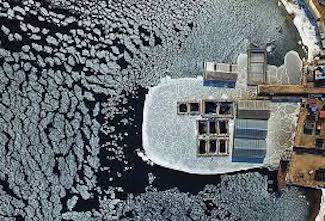What happens in Russia is important to the world of whale and dolphin advocacy and conservation. This is because that one country is the source of so many of the cetaceans forced into captivity around the world. China may represent the largest new demand for this industry at present, but thanks to geography Russia has been an all-important supplier. In fact, between 2012 and 2018, it was the world’s single largest source of marine mammals overseas. China is the largest importer of marine mammals captured in Russian waters.
This past March, however, a bill was introduced to the State Duma of the Russian Federation calling for a comprehensive ban on wild captures of marine mammals. If passed, this legislation would be a huge leap forward in phasing out whale and dolphin captivity in Russia, as most facilities today rely on wild-captures to restock. Just as importantly, it would mean to end of captures for export. To date, Russian waters have been by far the main source of supply for orcas and belugas on display in China.
It’s inspiring to think that the end of these horrific captures in Russian waters may soon come to a permanent end. The cruelty would continue in Japan, Cuba, and a small number of other countries, but the loss of Russian whales would be a serious blow to the industry. We are very encouraged that the momentum seems to be on our side, but we still need to be cautious. It will be necessary to overcome deeply entrenched institutional impediments before whale and dolphin captures and captivity truly end in Russia.
In 2018, the world’s attention became laser focused on Russia after four companies that supply marine mammals to aquariums caught 87 belugas and 11 orcas, and held them in abysmal conditions over several months. Taken under a legal clause permitting captures for ‘cultural and educational’ purposes, the whales were really destined for a life of confinement in Chinese aquariums. They languished in tiny, crowded holding pens in Srednyaya Bay (pictured above) in the far east of the country. Conditions worsened as winter approached, and you can clearly see the encroachment of ice beginning to cover the enclosures in this image.
The international outcry that resulted was intense. It came from scientists, as well as cetacean advocacy organizations like Marine Connection and Whale and Dolphin Conservation (WDC). It also came from the public as a worldwide effort arose to raise awareness of the plight of these individuals – reaching a crescendo when actors Leonardo DiCaprio and Pamela Anderson stepped up. Eventually, with even Putin himself getting involved, the captures were declared illegal. The companies responsible were issued fines and ordered to release the whales back to their home waters. These releases took place over a period of a few months, though it appears that at least some of the whales died while still being held in their pens.
The notorious ‘whale jail’, as the Srednyaya facility has become widely known, is now empty and unused. But the future of cetacean captivity in Russia is still an open question. What is perhaps most hopeful is that this terrible incident ignited a groundswell of support among the Russian public to ensure it doesn’t happen again. By early 2020 over 100,000 Russian citizens had signed on to petition their government to stop captures of orcas, beluga whales and dolphins for sale to captive facilities. Unfortunately, the response that came a few months later was dismissive to petitioners, and urged a continuation of the practice.
Nevertheless, outrage about the whale jail from both Russian citizens and international observers alike has had an impact. Exports were halted in 2019, and Russia issued no quotas for captures in 2020. And now this new bill introduced in March of this year. There is good reason to hope at this point that no further captures will take place. But we have yet to see what these events will mean for the long term.
The legal protections granted to cetaceans in Russia are much improved over what they once were. Bottlenose dolphins in the Black Sea are now protected as endangered species under the international CITES Convention. Most of the whales at risk now are in Russia’s far east, where they are much less well protected. It’s from there that ongoing demand for dolphins for shows and swim-with-dolphin attractions around the world have continued to be met. This despite the fact that, technically, it is only legal to capture whales and dolphins for “cultural, educational and scientific purposes”. The problem is that many captive facilities in Russia are recognized as institutions that meet one or more of these criteria. This is what the new legislation hopes to change.
Under Russian law, quotas for the capture of marine mammals are required to be set based on recent scientific knowledge about the population of the species being targeted. WDC reports that it’s more often been the case that accurate population data was not available, but the quotas would be issued anyway. This meant that the hunts were quite possibly unsustainable from the outset, but that was only a part of the story. They further report that, according to veterinarian and marine mammal specialist Tatiana Denisenko, 90% of individuals would die during the capture process or very soon afterwards.
Now we would be opposed to these captures even if they were entirely sustainable from a conservation standpoint, but these horrific numbers do certainly help make the case that they should end.
For now though, Russia continues to be among the nations having the highest numbers of aquariums holding captive dolphins. Pre-COVID-19 there were nearly forty permanent facilities, along with a few travelling circuses (where conditions for the dolphins tend to be even worse). But these are expensive operations to maintain, and it’s hard to know how many will have survived as we come through the pandemic. Surely now is the time to capitalize on declining support for captivity in Russia, and to begin to close these facilities for good. Unfortunately, operations to release cetaceans back into the wild are expensive and complicated, so it may be difficult to save many from the deplorable conditions they’re living in now. But at the very least now would seem the perfect time to halt the flow of new captives into the system.
There is still a great deal of work to do to bring about an end to the cruelty and injustice of whale and dolphin captures and captivity in Russia. But with the backing of so many of the Russian people, the fight will go on. There are many heroes emerging in this story, and eventually they will win the day. Now we have reason to hope that that day could come soon.
For The Orca’s Voice,
Dakota, Canadian Cetacean Alliance



Leave a Reply